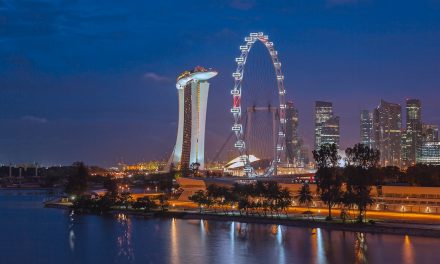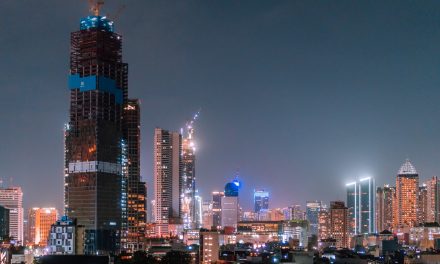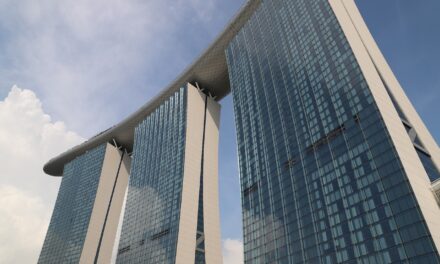In the first quarter of 2024, Singapore’s economy experienced its fastest growth in 18 months, expanding by 2.7% year-on-year.
To gain deeper insights into Singapore’s first quarter economic performance, released on Thursday, Diplomatic Network (Asia) spoke with S&P Global Market Intelligence Senior Economist Ahmad Mobeen.
Mobeen provides an expert analysis on the key factors driving the 2.7% year-on-year GDP growth, the impact of international economic performance on Singapore, and the implications of US monetary policy decisions on the city-state’s financial conditions.
Additionally, he discusses potential policy measures the Singapore government might consider to sustain and bolster economic growth, given the maintained GDP growth forecast of 1.0% to 3.0% for the year.
WHAT WERE THE KEY FACTORS THAT CONTRIBUTED TO THE 2.7% YEAR-ON-YEAR GDP GROWTH IN Q1 2024? WHY WERE THESE FACTORS SO PROMINENT?
The major factors by far were the large-scale entertainment concerts held by Coldplay and Taylor Swift in Singapore during the first quarter, which led to a notable increase in influx of tourists, higher retail sales and hotel spending, as well as uptick in financial transactions.
International visitor arrival rose 50% year-over-year in the first quarter of 2024. Hotel occupancies grew to 80% during the quarter, while in March airlines and hotels reported 30% increase in demand from the region around Taylor Swift concert dates.
Retail sales were also up 2.1% during the first two months of the year. Cumulatively, this fueled growth in transport and storage, accommodation, and finance and insurance sectors, which grew 6.8%, 14.4% and 6.5%, respectively, taking the overall services growth to 3.9% year-on-year.
From the expenditures side, this boosted real private consumption, which rose 5.8% year-on-year during the first quarter of 2024, higher than the 3.0% increase in the preceding quarter. All this was important, as manufacturing sector continued to remain a drag on the economy and contracted 1.8% y/y as electronics cluster underperformed.
HOW HAS THE BETTER-THAN-EXPECTED ECONOMIC PERFORMANCE IN THE US AND CHINA INFLUENCED SINGAPORE’S ECONOMIC GROWTH IN THE FIRST QUARTER OF 2024?
This must be looked at from two angles: tourism perspective and external demand perspective. Also, while the US has inarguably performed better than expected, Chinese economic growth has still remained relatively moderate so far.
From a tourism perspective, the opening of China’s economy led to a surge in tourist arrivals in Singapore, with Chinese tourists rebounding to 87% of pre-pandemic levels in the first three months of this year, up from 39% in last quarter of 2023.
This outpaced US tourist inflows and boosted services exports, retail sales, and hotel accommodation. However, moderate Chinese growth reduced overall external demand for Singapore, with external demand growth moderating to 5.9% in the first quarter of this year from 11.1% in the previous quarter.
On the US side, better economic performance also strengthened the US dollar, prompting the Monetary Authority of Singapore to maintain its policy band and rate of appreciation in April to counter imported inflation and global financial market volatility.
WITH THE US FEDERAL RESERVE EXPECTED TO DELAY POLICY RATE CUTS, WHAT POTENTIAL IMPACTS COULD THIS HAVE ON SINGAPORE’S FINANCIAL CONDITIONS AND OVERALL ECONOMIC GROWTH?
S&P Global Market Intelligence now projects the Federal Reserve to start cutting rates from December 2024. This means that overall easing in global financial market conditions will be delayed, as other central banks adopt a wait-and-see approach.
This will have some implications for the finance and insurance sub-sector of Singapore, where investment strategies will remain conservative and there could be a possible delay in investors transitioning fully towards growth focused investment portfolios. That said, however, the financial market of Singapore is fairly resilient and it being the wealth management hub of Asia, the overall impact will remain muted.
Overall, as external demand recovers from the second half of 2024 and manufacturing performance rebounds, the positive economic momentum will be sustained, and will be met by a parallel rise in commissions and fees of the banking and insurance sectors.
On the exchange rate front, stronger US dollar will continue to put pressure on the SGD, and the MAS will likely keep the policy corridor and rate of appreciation unchanged to keep imported inflation and impact of heightened global financial market volatility at bay.
CONSIDERING THE MAINTAINED GDP GROWTH FORECAST OF 1.0 TO 3.0% FOR 2024, WHAT POLICY MEASURES MIGHT THE SINGAPORE GOVERNMENT CONSIDER TO SUPPORT AND SUSTAIN ECONOMIC GROWTH?
In general terms, the immediate concern is the cost-of-living issue in the country. In this regard, to blunt the impact of rising inflation, the government has announced various relief measures in the 2024 budget to shield vulnerable income segments. Those measures include further enhancements to the Assurance Package for lower- to middle-income families, significant measures to support the older population under the SGD7.5 billion Majulah Package and the interest-free installment plan for their property tax payments.
The government policy has been working for several years to progressively transform the economy to become more knowledge-based with incentives to induce extra investment in labor-saving efforts and other investments focused on developing a more knowledge-based economy. The uptake has been weak, with small and medium-sized enterprises lagging behind larger firms, but the government seems to getting better in targeting its policies for this transition to gain momentum, especially under its Forward Singapore initiative, which seeks to refresh the country’s social compact by providing greater support for low-income households, expanding vocational and continuing education, and encouraging more flexible working conditions.
To achieve this, the government could explore options such as boosting investment in manufacturing and finance, increasing funding for innovation and research and development, updating the national artificial intelligence strategy focusing on semiconductor supply, and exploring the possibility of creating a national productivity fund to enhance global competitiveness.
While medium- and long-term growth ambitions will lead to increased government expenditure, Singapore’s history of fiscal prudence and substantial public sector funds ensure that financing is secure, with minimal debt concerns.






